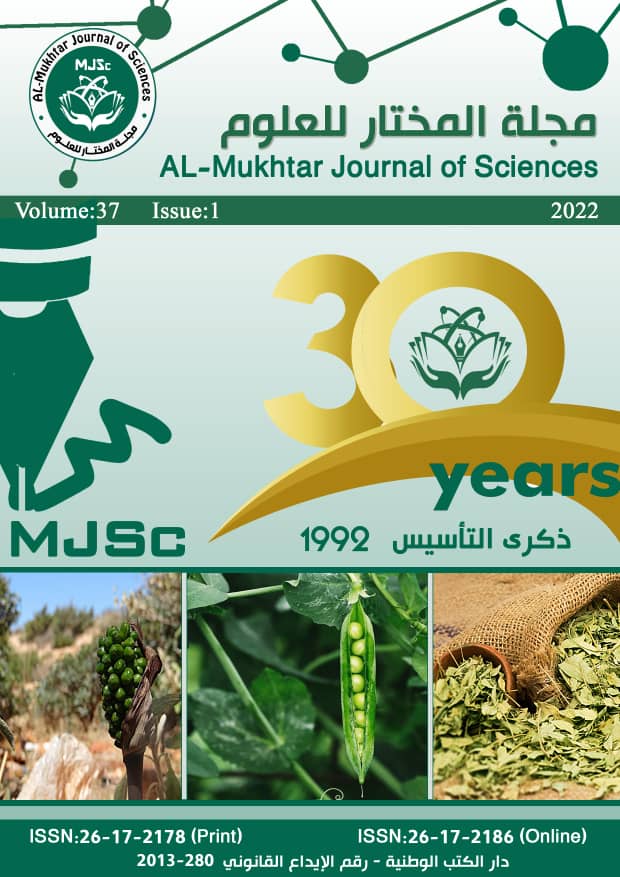Evaluation of Hepatotoxicity Effect of Sodium Stibogluconate (Pentostam) in Mice Model
DOI:
https://doi.org/10.54172/mjsc.v37i1.738Keywords:
Leishmaniasis, Pentostam, Hepatotoxicity, Albino MiceAbstract
The recommended treatment for visceral and cutaneous leishmaniasis is pentavalent antimony at a dosage of 20 mic/kg/day for 28 days. Some studies suggested that antimonial pentostam has multiple acute and chronic adverse effects, which can be minimized by using the lowest effective dose. The present study is aimed to evaluate the hepatotoxicity effect of sodium stibogluconate (pentostam) in mice as a model. Adult male albino mice were divided into three groups, seven mice each, injected with 20 mic/kg pentostam in addition to a control group. Later 14 days, groups II, III, and IV were tested after one, three, and six weeks respecttively. The mice’s serum and liver tissues were collected, and biochemical and histopathological measurement were carried out. Biochemical analysis of the serum obtained showed a significant increase in the levels of AST, ALT, and ALP in groups II and III when compared with the control group. In parallel, the histopathological assessments of the liver tissue proved hepatocytic necrosis. From this study, it can be concluded that the antimonial pentostam has a hepatotoxicity effect on treated mice.
Downloads
References
Afshar, S., Farshid, A., Heidari, R., & Ilkhanipour, M. (2008). Histopathological changes in the liver and kidney tissues of Wistar albino rat exposed to fenitrothion. Toxicology and industrial health, 24(9), 581-586.
Al-Jahdali, M. O., & Bisher, A. S. B. (2007). Testicular histopathological alterations in rats treated with sumithion® NP 25/2.5 EC, insecticide. J. Biol. Sci, 7(3), 520-525.
Behrens, R., & Doherty, J. (1993). Severe hepatitis A despite passive immunisation. The Lancet, 341(8850), 972.
Bergmeyer, H., Horder, M., Rej, R., & Committee, I. F. o. C. C. S. (1986a). Analytical Section: Approved recommendation (1985) on IFCC methods for the measurement of catalytic concentration of enzymes. Part 2. IFCC method for alanine aminotransferase (l-alanine: 2-oxoglutarate aminotransferase, EC 2.6. 1.2). Journal of clinical chemistry and clinical biochemistry. Zeitschrift für klinische Chemie und klinische Biochemie, 24(7), 481-495.
Bergmeyer, H., Horder, M., Rej, R., & Committee, I. F. o. C. C. S. (1986b). Analytical Section: Approved recommendation (1985) on IFCC methods for the measurement of catalytic concentration of enzymes. Part 3. IFCC method for alanine aminotransferase (l-alanine: 2-oxoglutarate aminotransferase, EC 2.6. 1.2). Journal of clinical chemistry and clinical biochemistry. Zeitschrift für klinische Chemie und klinische Biochemie, 24(7), 481-495.
Berman, J. D. (1988). Chemotherapy for leishmaniasis: biochemical mechanisms, clinical efficacy, and future strategies. Reviews of infectious diseases, 10(3), 560-586.
Dantas-Torres, F. (2006). Leishmune® vaccine: the newest tool for prevention and control of canine visceral leishmaniosis and its potential as a transmission-blocking vaccine. Veterinary parasitology, 141(1-2), 1-8.
Elammari, N. E., & Sariti, S. R. (2021). Anti-Leishmanial drug Pentostam induced histological changes to liver and kidney in male BALB/c wild mice. Health Sciences, 1(2), 07-14.
Galigher, A. E., & Kozloff, E. N. (1971). Essentials of practical microtechnique, Philadelphia, Lea & Fabiger Publisher, 2nd ed.
Gupta, P. S. (1953). Chemotherapy of leishmanial diseases, a resume of recent researches. The Indian Medical Gazette, 88(1), 20.
Harrison, W., Bradberry, S., & Vale, J. (1998). Sodium stibogluconate. UKPID Monograph, UK: National Poisons Information Services,(Birmingham Centre).
Hepburn, N., Siddique, I., Howie, A., Beckett, G., & Hayes, P. (1993). Hepatotoxicity of sodium stibogluconate in leishmaniasis. The Lancet, 342(8865), 238-239.
Hepburn, N., Siddique, I., Howie, A., Beckett, G., & Hayes, P. (1994). Hepatotoxicity of sodium stibogluconate therapy for American cutaneous leishmaniasis. Transactions of the Royal Society of Tropical Medicine and Hygiene, 88(4), 453-455.
Killick-Kendrick, R. (1990). The life-cycle of Leishmania in the sandfly with special reference to the form infective to the vertebrate host. Annales de Parasitologie humaine et comparée, 65, 37-42.
Meeting, W. E. C. o. t. C. o. t. L., & Organization, W. H. (2010). Control of the Leishmaniases: Report of a Meeting of the WHO Expert Committee on the Control of Leishmaniases, Geneva, 22-26 March 2010. World Health Organization.
Moss, D. W., & Butterworth, P. J. (1974). Enzymology and medicine. Pitman Medical.
Pearson, R. D., & de Queiroz Sousa, A. (1996). Clinical spectrum of leishmaniasis. Clinical infectious diseases, 1-11.
Sallie, R., & Tredger, J. (1999). Willaiam. Drugs and the liver. Biopharm Drug Dispos, 12, 251-259.
Thakur, C., Kumar, M., Kumar, P., Mishra, B., & Pandey, A. (1988). Rationalisation of regimens of treatment of kala-azar with sodium stibogluconate in India: a randomised study. Br Med J (Clin Res Ed), 296(6636), 1557-1561.
Tietz, N., Rinker, A., & Shaw, L. (1983). International Federation of Clinical Chemistry. IFCC methods for the measurement of catalytic concentration of enzymes. Part 5. IFCC method for alkaline phosphatase (orthophosphoric-monoester phosphohydrolase, alkaline optimum, EC 3.1. 3.1). IFCC Document Stage 2, Draft 1, 1983-03 with a view to an IFCC Recommendation. Clinica chimica acta; international journal of clinical chemistry, 135(3), 339F-367F.
Vaishwanar, I., Kowale, C., & Jiddewar, G. (1976). Effect Of 2 Ayurvedic Drugs Shilajeet And Eclinol On Changes In Liver And Serum-Lipids Produced By Carbon-Tetrachloride (Vol. 14, pp. 58-61): Council Scientific Industrial Research Publ & Info Directorate, New Delhi ….
Wortmann, G., Miller, R. S., Oster, C., Jackson, J., & Aronson, N. (2002). A randomized, double-blind study of the efficacy of a 10-or 20-day course of sodium stibogluconate for treatment of cutaneous leishmaniasis in United States military personnel. Clinical infectious diseases, 35(3), 261-267.
Downloads
Published
How to Cite
License
Copyright (c) 2022 Kaula. A. Saad

This work is licensed under a Creative Commons Attribution-NonCommercial 4.0 International License.
Copyright of the articles Published by Almukhtar Journal of Science (MJSc) is retained by the author(s), who grant MJSc a license to publish the article. Authors also grant any third party the right to use the article freely as long as its integrity is maintained and its original authors and cite MJSc as original publisher. Also they accept the article remains published by MJSc website (except in occasion of a retraction of the article).










